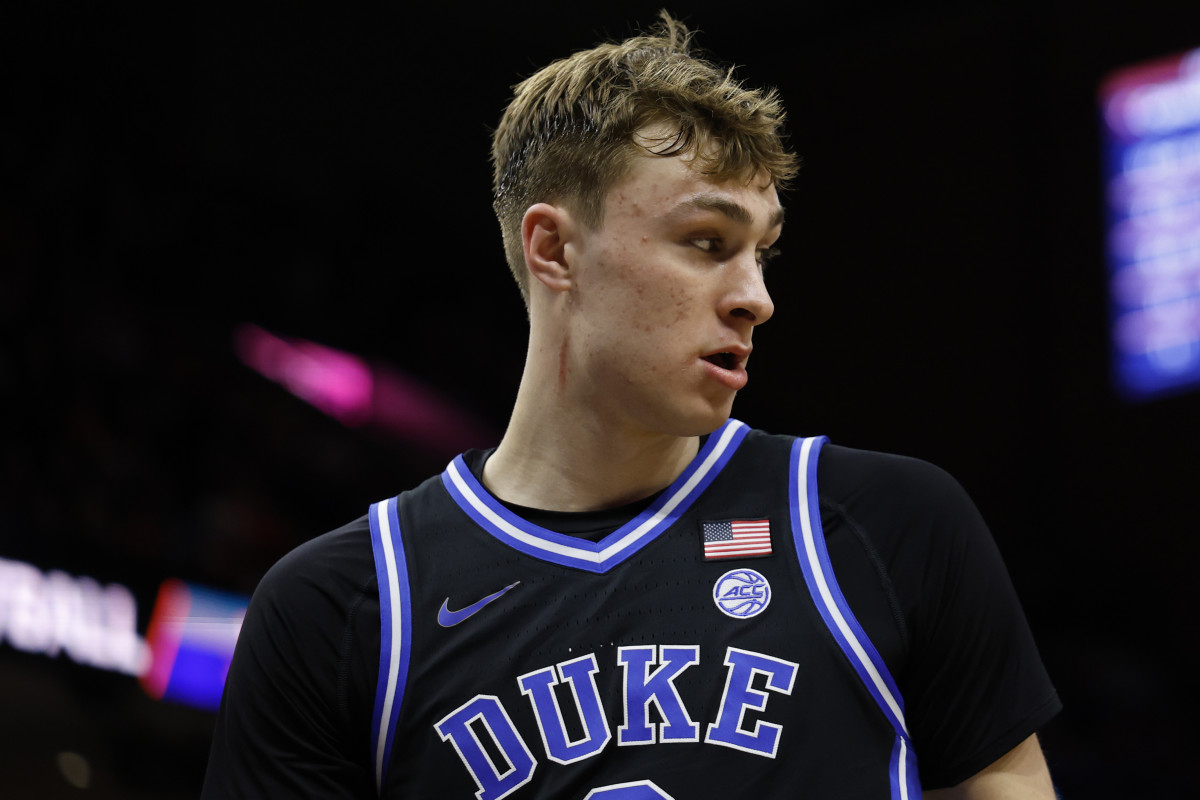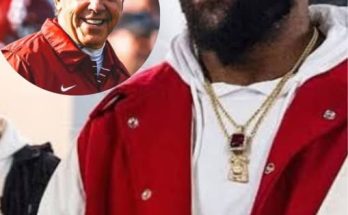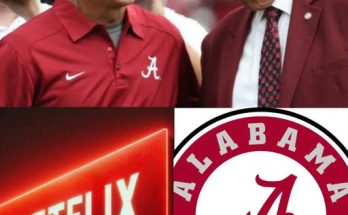The news that Duke basketball fans feared finally became reality this week—Cooper Flagg, the projected No. 1 pick in the 2025 NBA Draft and the face of the Blue Devils’ program, has officially declared for the league, bringing his spectacular college career to an end after just one season in Durham. But while the loss of Flagg marks the end of an era, it also signals the start of a new one. And if Duke’s latest roster announcement is any indication, the program is not only preparing for life without its generational star—it’s fully embracing the opportunity to reload and reassert its position atop college basketball.
In the wake of Flagg’s departure, Duke head coach Jon Scheyer has moved quickly and decisively, announcing a series of major roster moves that promise to reshape the identity of the team heading into the 2025-26 season. Among the headline-grabbing changes: a pair of high-profile transfers, the return of a key veteran leader, and the surprising commitment of a top-five recruit who had previously been considered a lock elsewhere.
The first domino to fall was the commitment of 7-foot-6 Canadian center Olivier Rioux, who is transferring from Florida to Duke. While Rioux may not have the same national star power as Flagg, he brings a physical presence to the paint that Duke hasn’t had in years. His size alone changes the geometry of the game, and his arrival immediately gives Scheyer a defensive anchor around which to build. Rioux’s growth as a shot-blocker and rebounder during his time in Gainesville turned heads around the SEC, and Duke believes it can unlock even more from him in Durham.
Next came the return of sophomore guard Caleb Foster, who had been testing the NBA Draft waters but opted to return for another year. Foster’s decision to run it back with the Blue Devils couldn’t have come at a better time. With Flagg gone, the team will need a new primary playmaker and leader in the backcourt—Foster is more than ready to take on that mantle. A poised ball-handler with deep range and underrated defensive instincts, Foster provides a stabilizing presence for a roster that will be mixing experience with youthful upside.
In addition to Foster’s return and the arrival of Rioux, Duke pulled off perhaps its most stunning move of the offseason when it flipped top-five recruit Jalil Bethea from Miami. The five-star shooting guard had long been linked to the Hurricanes, with some insiders already penciling him in as the crown jewel of Jim Larrañaga’s recruiting class. But after a late push from Scheyer and a weekend visit to Durham, Bethea shocked the recruiting world by pledging to Duke. The Pennsylvania native cited Duke’s culture, player development, and recent history of producing NBA-ready wings as key reasons behind his decision.
With Bethea joining fellow elite recruits Isaiah Evans and Kon Knueppel—who recently rejected a lucrative offer to turn pro early—the Blue Devils now boast one of the most dynamic freshman classes in the nation. Knueppel’s return was another quiet but critical victory for Scheyer. The Wisconsin native had drawn NBA interest after his strong postseason performance, but ultimately chose to return to Duke to chase a national title and continue developing his game under the Blue Devil coaching staff. His ability to shoot, pass, and guard multiple positions makes him a Swiss army knife who will see heavy minutes.
In the aftermath of Flagg’s departure, the question for Duke was never how to replace him with a single player—because you can’t. Instead, the Blue Devils have focused on diversifying their strengths and building a roster with versatility, size, and cohesion. Rioux offers size and rim protection, Foster provides experience and stability, Bethea brings explosive scoring potential, and Knueppel adds high-level polish. And that’s before factoring in returning role players who are expected to take major leaps next season.
Perhaps the most overlooked aspect of Duke’s offseason plan is its commitment to developing its bench. Players like Sean Stewart, TJ Power, and Jared McCain—assuming he doesn’t stay in the draft—are all poised to take on bigger roles. Stewart, a bouncy forward with a nose for the ball, was a key reserve last season who’s ready for a breakout campaign. Power, a skilled stretch four, has been quietly developing into one of the best shooters on the team. And McCain, should he return, is a star in the making who can easily slide into Flagg’s scoring vacuum while offering his own brand of competitive fire.
Then there’s the intangible element—how Duke channels the absence of its former leader. By all accounts, Flagg left a lasting impact on the program. His work ethic, intensity, and team-first attitude set the tone for everyone around him. In his absence, that legacy becomes a standard for returning players to uphold. Sources close to the program suggest that Coach Scheyer has already begun using Flagg’s commitment to excellence as a rallying cry for the next group of stars.
“Cooper was incredible for us—on the court, in the locker room, in every aspect,” Scheyer said in a statement. “We’re grateful for what he gave this program and excited to support him as he takes this next step. But this is Duke. We don’t rebuild—we reload.”
That mantra is more than just a marketing line. It reflects the confidence that Duke has in its infrastructure. With one of the best coaching staffs in the country, a deep pipeline of talent, and a national brand that still resonates with top-tier recruits, the Blue Devils remain a destination. The transition from the Flagg era to what comes next may feel sudden, but it’s not unfamiliar territory. Duke has been through it before with players like Zion Williamson, RJ Barrett, Paolo Banchero, and Jayson Tatum. And each time, the program has continued to compete at the highest level.
Still, there’s no denying that expectations will shift. Without a clear-cut No. 1 pick leading the way, Duke’s 2025-26 season will be defined more by balance and depth than star power. That’s not a bad thing. In many ways, this roster feels more complete—less reliant on one player to generate offense or carry the defensive load. It’s a group with size, spacing, and the potential to be elite on both ends of the floor. And with players like Foster and Bethea capable of taking over late in games, the Blue Devils should remain a nightmare matchup for opponents.
Another intriguing subplot to watch will be the growth of Coach Scheyer himself. Now entering his fourth season as head coach, Scheyer has weathered the pressures of following a legend and carved out a clear identity for his team. He’s shown he can win big games, recruit elite talent, and adapt to the modern landscape of college hoops. The next step in his evolution will be guiding a team that doesn’t have a once-in-a-decade player like Flagg, and instead must rely on collective buy-in and internal development.
From a broader perspective, Duke’s aggressive approach to the transfer portal and recruiting wars sends a message to the rest of college basketball: the Blue Devils aren’t going anywhere. Even as the sport undergoes seismic shifts with NIL, conference realignment, and early NBA entries, Duke continues to adapt—and thrive. Their ability to secure a player like Rioux, flip a five-star like Bethea, and retain key veterans is evidence of a program with both staying power and vision.
As for the fans, the emotions are understandably mixed. Flagg was a fan favorite, a highlight-reel machine, and someone who embraced the Duke tradition with maturity beyond his years. Watching him leave is bittersweet. But those same fans have plenty to look forward to. A new cast of characters is ready to write the next chapter of Duke basketball. And if history is any guide, it’s going to be one worth watching.
For now, the message from Durham is clear: the Cooper Flagg era may be over, but the Duke standard remains. And thanks to a flurry of bold offseason moves, the Blue Devils are once again poised to be right in the thick of the national title conversation—just the way it should be.



